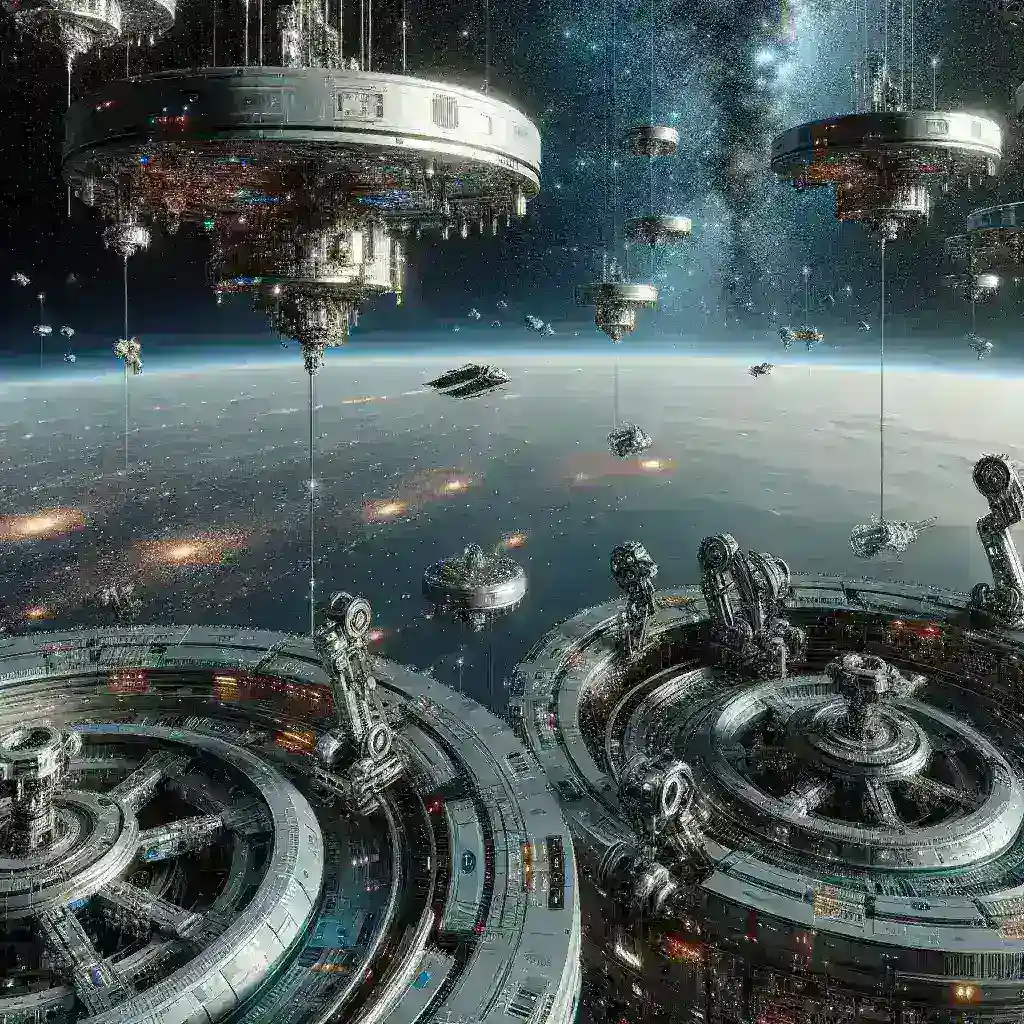Introduction
The future of space exploration is bright, with technologies evolving at a staggering pace. One of the most exciting developments is the use of robotic AI systems to assemble orbital fuel depots, paving the way for efficient spacecraft refueling. This article dives into the significance of these advancements, their historical context, current applications, and future predictions.
Historical Context
The concept of refueling spacecraft in orbit is not new. Early missions, such as the Apollo program, primarily focused on launching and returning to Earth, limiting the operational range of spacecraft. As missions became more ambitious, the idea of fueling spacecraft in space gained traction. The development of robotic technologies has accelerated this vision, making it feasible.
The Evolution of Robotic Systems in Space
- 1960s-1980s: Early robotic arms, like those used in the Apollo Lunar Module, showcased the potential for automation.
- 1990s: The International Space Station (ISS) saw the introduction of advanced robotic systems, such as the Canadarm, which emphasized precision and control.
- 2000s-Present: Artificial intelligence integration in robotics has enabled autonomous operations, vital for assembling complex structures like fuel depots in orbit.
The Role of AI in Robotic Assembly
Integrating AI with robotic systems is a game-changer for assembling orbital fuel depots. Here are some key advantages of using robotic AI systems:
- Autonomy: Robotic systems can operate independently, reducing the need for constant human oversight.
- Precision: AI algorithms enhance the accuracy and reliability of assembly processes, critical for safety in space missions.
- Efficiency: AI can optimize assembly strategies, reducing time and resource consumption.
Current Applications
Robotic AI systems are already being deployed in various capacities related to orbital fuel depot assembly:
1. Satellite Refueling
Modern spacecraft can now be refueled in orbit, extending their operational lifespan significantly. Robotic systems equipped with AI can identify and execute refueling tasks autonomously.
2. Space Construction
Assembling larger structures in space, such as fuel depots, is increasingly feasible with robotic systems. NASA’s Artemis program aims to establish a lunar base, highlighting the need for efficient assembly methods.
3. Data Collection and Monitoring
Robotic AI systems can gather data on fuel levels, system integrity, and environmental conditions, allowing for proactive maintenance and operational adjustments.
Future Predictions
The landscape of space exploration is changing rapidly, and the role of robotic AI systems will be pivotal:
- Expansion of Orbital Infrastructure: Increased demand for orbital fuel depots will lead to more advanced robotic AI systems capable of constructing and maintaining these facilities.
- Interplanetary Missions: As we venture beyond Mars, the need for refueling depots will grow, making robotic assembly crucial for deep space exploration.
- Collaboration with Human Astronauts: Future missions will likely feature a hybrid approach, with AI systems and human crews working together to tackle complex tasks.
Pros and Cons of Robotic AI Systems
Pros
- Reduced Human Risk: Performing high-risk tasks in space with robots decreases the danger to human astronauts.
- Cost Efficiency: Automating assembly processes can lead to significant cost savings over time.
- Increased Mission Capabilities: With autonomous assembly, missions can achieve more ambitious objectives without the same limitations as before.
Cons
- Technical Challenges: Developing reliable and autonomous robotic systems poses significant technical hurdles.
- Dependence on Technology: Increased reliance on AI may raise concerns about losing essential human skills in space operations.
- Ethical Considerations: As AI systems evolve, ethical questions about decision-making in critical situations must be addressed.
Real-World Examples
Several organizations are already exploring the potential of robotic AI systems in space:
1. NASA’s Robotic Servicing of Geosynchronous Satellites (RSGS)
This initiative aims to develop robotic capabilities for servicing satellites in orbit, including refueling and upgrades.
2. SpaceX’s Starship
SpaceX’s ambitious plans for the Starship include in-orbit refueling capabilities that would utilize robotic technology.
Cultural Relevance
The integration of robotic AI systems in space reflects humanity’s desire to push boundaries. As we endeavor to explore further, the cultural significance of these innovations cannot be overstated. They symbolize our quest for knowledge and the unyielding spirit of exploration.
Conclusion
Robotic AI systems are transforming the way we think about space travel, especially concerning the assembly of orbital fuel depots. As technology continues to advance, we can expect to see these systems play an increasingly vital role in enabling sustainable and ambitious space missions. Embracing these innovations will be essential for the future of space exploration, ensuring that we can reach new heights as a species.


Leave a Reply